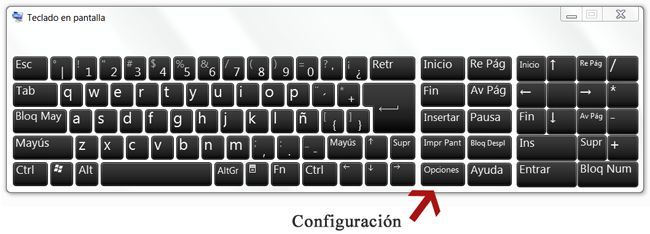In some cases on Windows Vista or later (including Windows 7 and Server 2008) if Ctrl-Alt-Del is enabled and
After Windows 10 2004 update the keyboard is not responding for combination of Keys. For e.g Ctrl+Alt+Del is not working. Single key is working fine. Alt Tab, Alt F4, Ctrl C, Ctrl V is working. I have tried all the troubleshooting options including downgrading the OS to 1903, upgrading the BIOS to 316 version, Keyboard checked. Mar 30, 2020 Method 1: Using the Ctrl + Alt + End. Hold the Windows key and press R to open the Run command window. Type ‘ mstsc ‘ and Enter to open Remote Desktop Connection. Opening Remote Desktop Connection through Run. Click on the Show Options button at the bottom and select the Local Resources tab. Here you need to check the Keyboard option. Your other question, teamviewer afaik essentially just sends a software signal to the host that opens the task manager, it's not a real ctrl-alt-delete (but this is just guessing from my part I.
User Account Control(UAC) is switched off it may be necessary to change the Group Policy to enable 'Simulation of the Secure Attention Sequence in Software'. To do this please run through the following steps:- Start Menu - Run
- Type in 'gpedit.msc' and hit OK
- Under the tree item: Computer Configuration - Administrative Templates - Windows Components - Windows Logon Options
- Right click 'Disable or enable software Secure Attention Sequence'
- Select 'Properties'
- In the dialog that pops up select 'Enabled'
- In the drop down menu under 'Set which software is allowed to generate the Secure Attention Sequence' select' Services and Ease of Access Applications'
- Hit OK
- Close the Group Policy window

Ctrl Alt Delete Picture
Ctrl-Alt-Delete as sent by the Remote Access service is purely simulating the secure attention sequence (Ctrl-Alt-Delete) at login time. Using this menu item at other times to launch task manager or lock the screen etc will have no effect, however these can be accomplished easily via other means.In the unlikely event that you are still unable to send Ctrl-Alt-Del after making these changes please check the following:
- You are sending CAD via the Ctrl-Alt-Del (Login Signal) menu item (Tools menu) in SimpleGateway
- Is there a group policy overriding the local policy on the relevant machine? (for example, is the machine part of a domain?)
In some cases on Windows Vista or later (including Windows 7 and Server 2008) if Ctrl-Alt-Del is enabled and User Account Control(UAC) is switched off
Ctrl Alt Delete Comic
it may be necessary to change the Group Policy to enable 'Simulation of the Secure Attention Sequence in Software'. To do this please run through the following steps:
- Start Menu - Run
- Type in 'gpedit.msc' and hit OK
- Under the tree item: Computer Configuration - Administrative Templates - Windows Components - Windows Logon Options
- Right click 'Disable or enable software Secure Attention Sequence'
- Select 'Properties'
- In the dialog that pops up select 'Enabled'
- In the drop down menu under 'Set which software is allowed to generate the Secure Attention Sequence' select' Services and Ease of Access Applications'
- Hit OK
- Close the Group Policy window
Ctrl Alt Delete On Teamviewer 8
Ctrl-Alt-Delete as sent by the Remote Access service is purely simulating the secure attention sequence (Ctrl-Alt-Delete) at login time. Using this menu item at other times to launch task manager or lock the screen etc will have no effect, however these can be accomplished easily via other means.Ctrl Alt Del Not Working Teamviewer

In the unlikely event that you are still unable to send Ctrl-Alt-Del after making these changes please check the following:
Ctrl Alt Del Via Teamviewer
- You are sending CAD via the Ctrl-Alt-Del (Login Signal) menu item (Tools menu) in SimpleGateway
- Is there a group policy overriding the local policy on the relevant machine? (for example, is the machine part of a domain?)